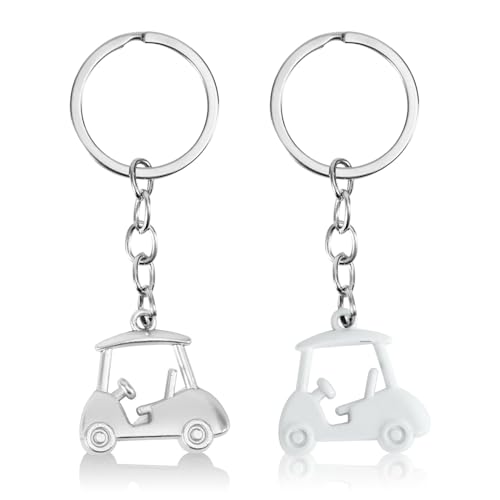Ever wondered if your trusty golf clubs can handle the chill of a cold weather round? You’re not alone. Many golfers face the dilemma of whether to brave the elements or shelve their clubs until spring.

Cold weather doesn’t mean you have to say goodbye to the greens. In fact, playing golf in lower temperatures can be a unique challenge that’s both refreshing and rewarding. Let’s dive into how your clubs perform when the mercury drops and what you can do to keep your game hot even when it’s cold out.
Can Golf Clubs Handle Cold Weather?
Golf clubs are designed to withstand a variety of weather conditions, but cold weather can present some unique challenges. When temperatures drop, the materials in your golf clubs, particularly the metal woods and irons, can lose some flexibility. This can alter the dynamics of your swing and the flight of the ball. However, major golf club manufacturers often test their products in different environments to ensure performance isn’t severely compromised in colder conditions.
It’s important to understand how cold weather affects the ball more than the club. Golf balls can become harder and lose elasticity when the thermometer dips, leading to shorter flights. But by keeping your balls warm prior to play, you can mitigate some of these effects. Carrying a pocket ball warmer or simply keeping golf balls inside your jacket between holes can make a noticeable difference.
In terms of your actual clubs, steel shafts are less affected by the cold compared to graphite shafts, but the difference isn’t significant enough to alter your club selection just for winter play. Keep in mind that your grip might get stiffer, so wearing proper gloves to maintain a firm and comfortable grasp is crucial.
Regarding your club’s performance, some adjustments to your swing may be necessary:
- Swing easy, as trying to hit the ball too hard can result in mishits, especially when muscles are tight.
- Focus on clean contact, which is always paramount, but cold weather magnifies the importance.
Lastly, don’t forget to adjust your expectations. Cold weather golf is about managing conditions and maintaining your game, not necessarily setting personal bests. As a low handicap golfer, finesse and control should be your priorities, not distance. Navigating the course with precision will help you maintain or even improve your performance during these cooler months. Keep up your routine maintenance, and your clubs will be as ready as you are to tackle the cold.
Effects of Cold Weather on Golf Clubs
When winter rolls around and temperatures drop, you might wonder if it’s even worth heading to the course. You’ve already learned that the cold can affect both your swing and the ball’s performance, but what about your clubs? Let’s dive deeper.
Like any equipment used in outdoor sports, golf clubs are susceptible to the effects of cold weather. The materials used to construct clubs, including metal, carbon fiber, and rubber, react to cold in a way that can change how they perform. For instance, metal clubheads can lose a bit of their trampoline effect in colder temperatures. This means you won’t get the same level of response when you strike the ball, possibly leading to lower ball speeds and shorter distances.
Shafts too can be affected. In cold weather, they may not flex as easily, especially if you’re using a shaft with a high-flex point. You’ll notice this when you’re trying to whip through the ball – something feels off. That’s because the shaft has become stiffer, affecting the loading and unloading during your swing.
It’s also important to pay attention to the condition of your golf grips. Ideally, they should be tacky and comfortable to hold. However, in the cold, grips can harden and become slick, making it harder to maintain a consistent grip pressure throughout your swing.
To combat these issues, you can:
- Use softer flex shafts that can provide better performance in lower temperatures.
- Keep your clubs inside to maintain a warmer temperature before you head out to play.
- Regularly check and replace grips to ensure they’re in optimum condition for cold weather performance.
Remember, it’s not just about the equipment. Your body is part of the machinery too. Stay loose and keep your muscles warm to ensure your natural swing isn’t thrown off by tightness or discomfort from the chilly air. And don’t forget, adjustments like these aren’t just one-offs; they’re part of a continual process to ensure you’re at the top of your game, no matter the season.
Choosing the Right Golf Clubs for Cold Weather
When the temperature plummets, your choice of clubs can make or break your game. You’ve got to be savvy about which ones you pull from the bag. Winter golf demands a different approach, one where the characteristics of cold weather golf clubs can turn the tide in your favor.
First off, consider the material of your clubheads. Titanium is a popular choice, renowned for its strength-to-weight ratio, but it can feel a bit more rigid when it’s cold. Composite materials, on the other hand, may maintain a more consistent performance in chilly conditions. Look for clubs specifically designed for use in colder climates. They’ll often have features that combat the adverse effects of low temperatures on the ball’s flight.
Shafts get a lot of attention in the cold. Remember how shafts can stiffen as the mercury drops? To counteract this, you might want to switch to a shaft with a softer flex. It’ll help maintain that smooth loading and unloading in your swing—crucial for keeping that ball speed up. Graphite shafts are particularly known for retaining a better flex profile when it’s cold, compared to their steel counterparts.
Then there’s the matter of ball flight. Colder air is denser, which means your usual club could see a reduction in distance. You might need to club up, picking a stronger club than you’d typically use in mild weather. Testing different options during a range session could give you a good feel for how your shots are affected by the cold and which clubs will give you the most reliable performance.
Keep in mind that grips can be more challenging to manage in cold weather. Opt for grips that offer optimal tackiness even when the thermometer dips. Some golfers swear by corded grips in winter, as they provide extra traction for those cold, perhaps even wet, hands.
Lastly, always think about your balls. Oh yes, even these are affected by the cold! Consider switching to a low compression golf ball which retains better energy transfer at lower temperatures. They tend to soften the impact, giving you a better feel in cold conditions and helping to mitigate the effects of frigid air on your distance.
By choosing the right equipment suited for the cold, you’ll maintain an edge over the elements—and your competition. Keep testing and tweaking; the perfect cold-weather setup for you is out there.

Taking Care of Your Golf Clubs in Cold Weather
When the temperature drops, your clubs demand a little extra TLC. Winter maintenance is crucial to ensure your set remains in prime condition, ready for your next round, no matter how chilly it gets. Start by storing your clubs in a temperature-controlled environment. It’s a common misstep to leave them in the trunk of your car, but the cold can significantly affect the materials of your clubs, leading to unwanted damage.
To really protect your gear, make sure you’re using headcovers. These aren’t just for show – they provide a layer of insulation, keeping your clubheads at a more consistent temperature. Besides, they prevent the clubs from clanking together, which can be more damaging in cold weather when materials are more brittle.
Before heading out to the course, let’s talk about cleaning. Your clubs perform best when they’re clean, so wipe down the grips and the clubhead before you tee off. Dirt and moisture can affect the grip and the club’s performance, which is heightened in cold conditions.
If you’re playing in the wet, a towel becomes your best friend. Keep one handy to dry off your clubs and balls. Moisture wreaks havoc on your equipment, increasing the risk of rust and reducing tackiness on grips. Remember, a dry club is a happy club.
And don’t forget your club’s shafts. Composite materials can be particularly sensitive to cold. Regularly check for signs of wear or cracking. If you spot any issues, it’s time to visit your local pro shop for advice. They may need to be replaced more frequently if you’re routinely playing in cold weather.

Lastly, while you’re out on the course, take each shot with care. Cold weather can make the ball less responsive, which might make you want to swing harder. Resist the urge. A well-maintained club with a controlled, smooth swing will always serve you better than a forceful hack at the ball. Keep your swing tempo consistent, and let your equipment do its job.
Remember, properly taking care of your clubs in cold weather means they’ll take care of your game.
Tips for Playing Golf in Cold Weather
Perfect Your Warm-Up Routine
Your body’s flexibility and ability to perform is more critical in cold conditions, and a proper warm-up is non-negotiable. Start with dynamic stretching to get blood flowing to your muscles. Focus on your shoulders, back, and legs as these areas are crucial to a smooth swing. Engage in a light cardio exercise, like brisk walking, to raise your core temperature. By doing this, you’ll not only limber up but also reduce the risk of injury from stiff, cold muscles.
Choose the Right Attire
Layering is your best friend on chilly fairways. Begin with a moisture-wicking base layer to keep sweat away. Add a thermal middle layer for insulation and top it off with a windproof and waterproof outer shell. However, make sure your movement isn’t restricted by too many bulky layers. Specially designed cold weather golf gloves and thermal hats will also maintain your feel and touch.
Adjust Your Expectations
Cold air is denser, which means the ball doesn’t travel as far. You might require a club or two more than you would normally use. Be realistic about your distances and choose your clubs accordingly. Also, cold weather can harden the golf ball, further reducing its flight and bounce. A lower compression ball can help counteract this effect somewhat so consider using one during your winter rounds.

Adapt Your Strategy
The course plays differently when it’s cold, and you’ll need to adapt. Greens may be slower and less responsive, so be prepared for a firmer putting stroke. The ground may be harder, affecting how the ball responds on landing. Focus on clean contact and control rather than power. When planning your shots, factor in that there may be less roll on drives, and approach shots might bounce more than usual.
Maintain Your Equipment
While storing your clubs properly is vital, so is looking after them during the round. Keep your balls warm, if possible, to optimize their performance. Carry a towel to wipe off any moisture and mud from the clubs and ball. A dry ball and clean grooves are essential for maximizing control and precision in your game.










